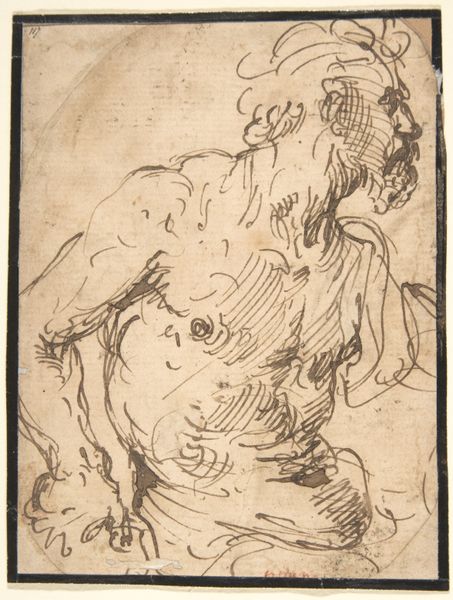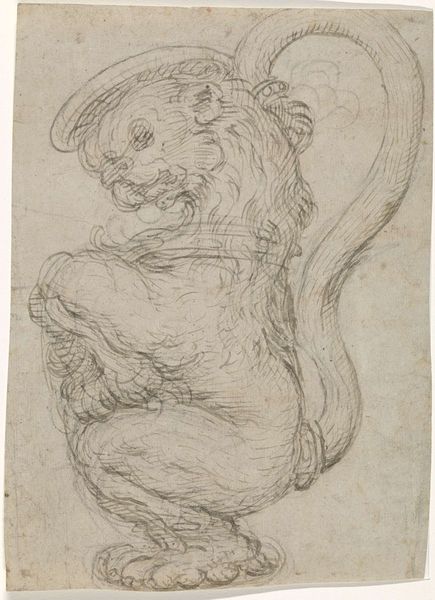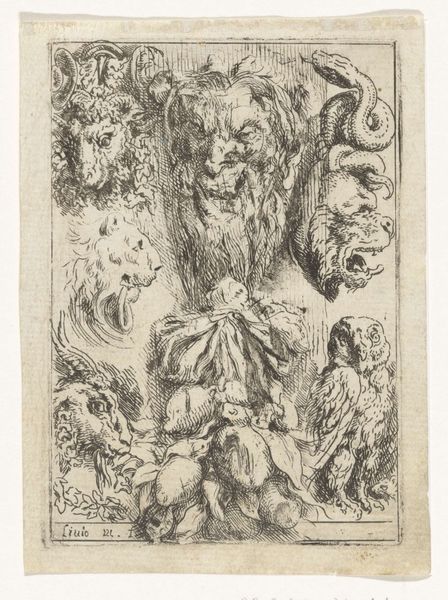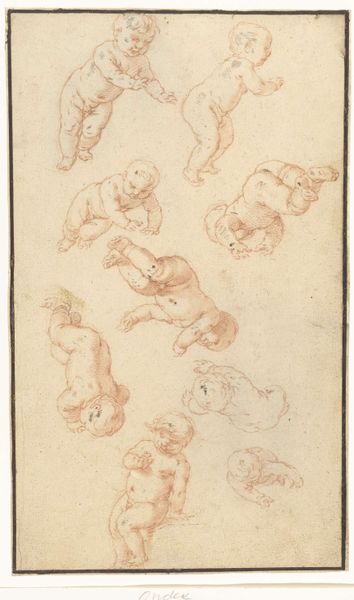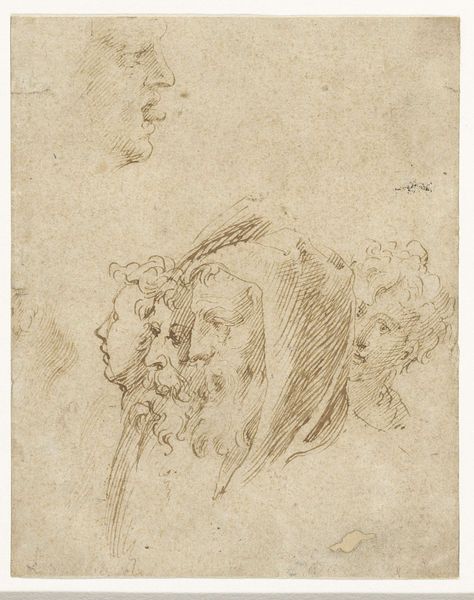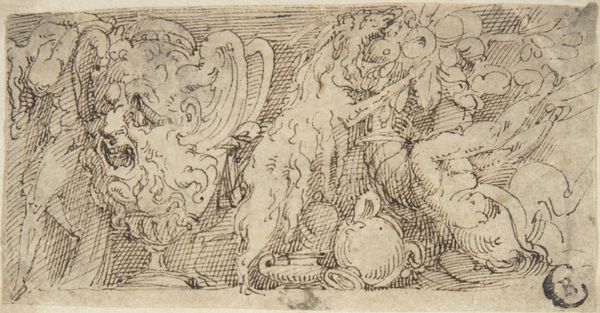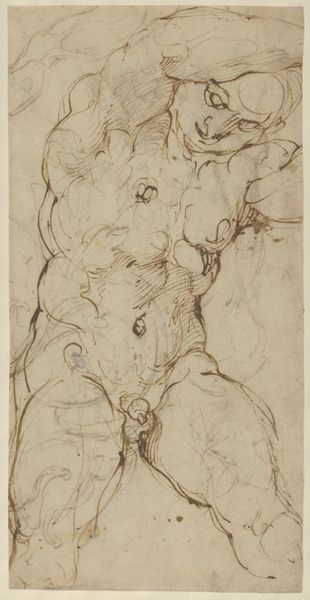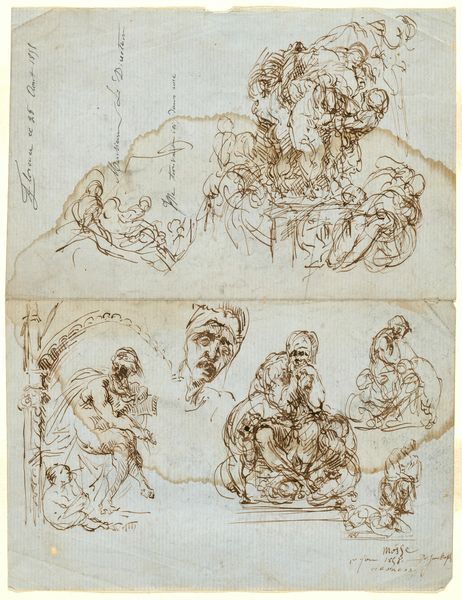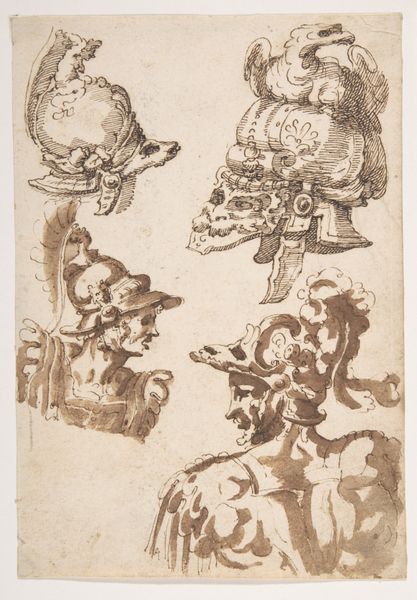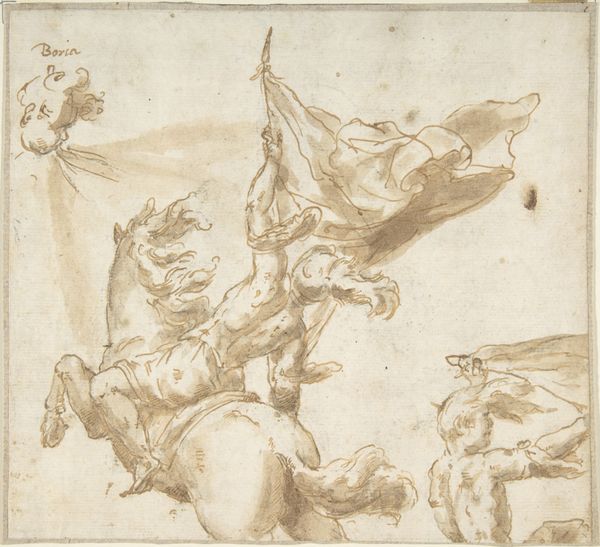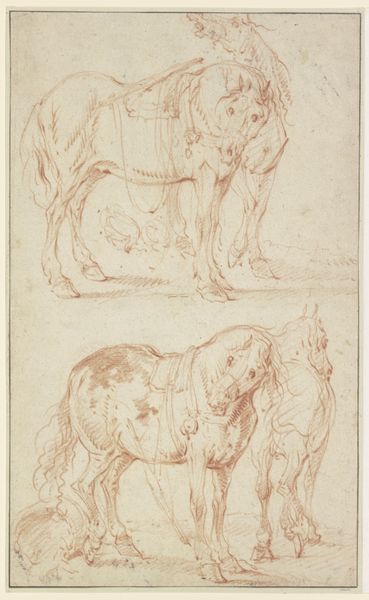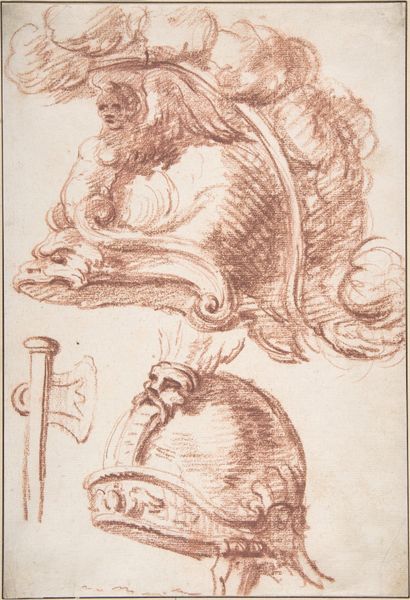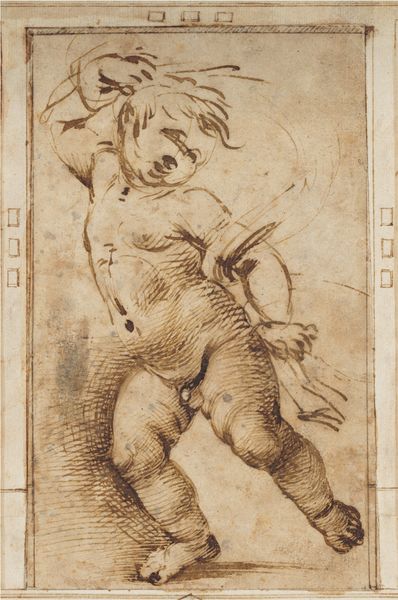
Six Studies of Animal Heads and of a Cartouche 1527 - 1596
0:00
0:00
drawing, paper, ink
#
portrait
#
drawing
#
mannerism
#
figuration
#
paper
#
11_renaissance
#
ink
Dimensions: 8 × 5 3/16 in. (20.3 × 13.1 cm)
Copyright: Public Domain
Curator: Let's take a closer look at Pellegrino Tibaldi's "Six Studies of Animal Heads and of a Cartouche," an ink drawing on paper dating from 1527 to 1596. It’s currently housed at the Metropolitan Museum of Art. Editor: My initial impression is one of ferocious energy! There's a real sense of raw power emanating from these beastly sketches. Curator: Absolutely. Note the artist's choice of ink on paper – it’s a readily available, relatively inexpensive medium, implying perhaps a preparatory study rather than a finished, presentation piece. Considering Tibaldi’s other work, we see this focus on economical materials, emphasizing the act of creation itself, the process. Editor: It’s fascinating how these fragmented images create a cohesive whole. Lions, it seems. Lions were ubiquitous in Renaissance heraldry, often representing strength, courage, and nobility. And see, lower center? A Cartouche – an ornamental frame or panel. The combination suggests perhaps designs intended for some nobleman's estate or even armor. Curator: I agree. And I wonder about the use of paper. The availability of paper in the Renaissance workshops facilitated these rapid explorations, almost like a visual brainstorming. This allowed artists like Tibaldi to experiment freely, moving beyond rigid artistic constraints of previous eras. Editor: These images echo ancient bestiaries – the lion in particular has accumulated a rich symbolic history over millennia, and Tibaldi clearly draws upon that pre-existing understanding. Each roar seems to vibrate with centuries of accumulated meaning. They also evoke classical sculptures – fragments of grander wholes. The paper here seems a space where these associations collide. Curator: And consider how this sheet might have been part of workshop practice. Apprentices likely had access to such drawings, studying them to internalize techniques and motifs. They would understand the market demands as well, to reproduce this artistic vocabulary on different commissions. Editor: Looking closer, there's one lion with particularly wild, almost untamed eyes. A tiny detail, but it seems to represent a rejection of order, the primitive id straining against the strictures of civilized society. It brings a psychological weight to this entire drawing that's so very exciting. Curator: Precisely! Reflecting upon it, understanding the drawing from the artist's process enhances my sense of how these pieces were created, as workshop templates to produce work. Editor: Yes, and I feel enriched by considering the legacy of lion imagery and how Tibaldi continues the tradition with flair!
Comments
No comments
Be the first to comment and join the conversation on the ultimate creative platform.

